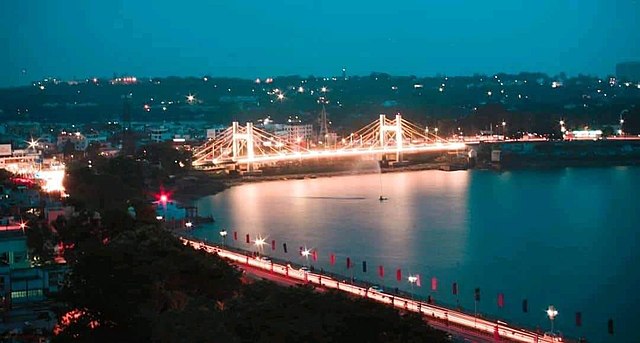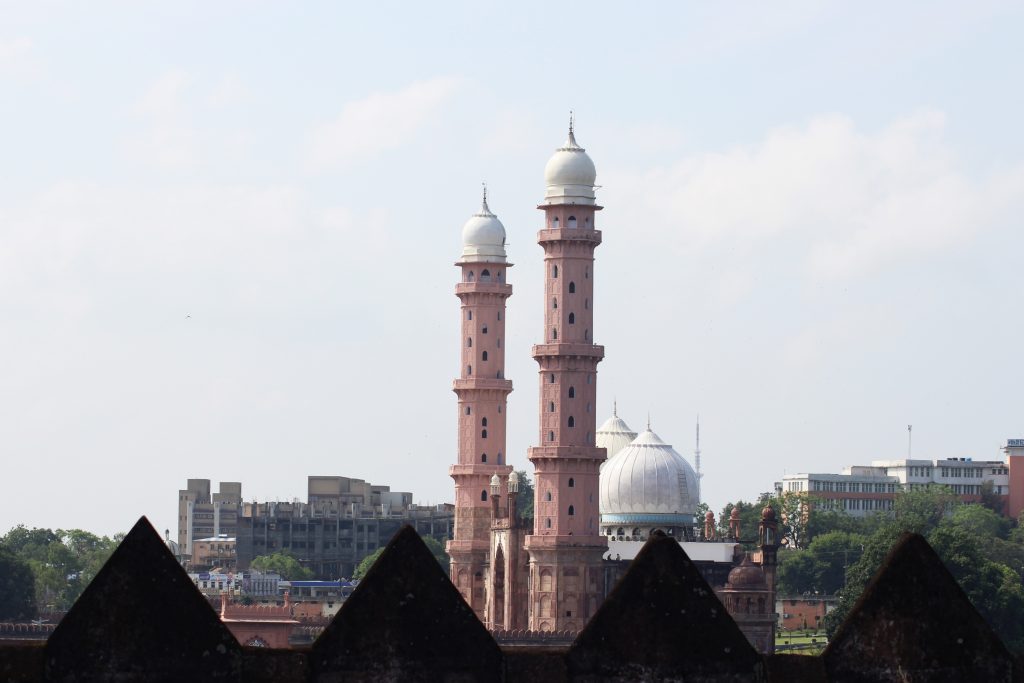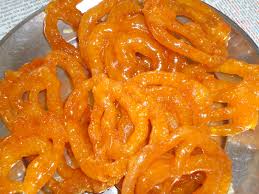
Travel: Bhopal, Madhya Pradesh
Orange jalebis in the winter air

Bhopal. Of course, the point is: can one get past the unseen but very-much-felt Carbide shroud, that heinous, diaphanous, brown-stained winding sheet?
Then again, it’s not as if Indra Sinha’s Animal confronts the visitor at every turn in the road; it’s not as if the city has forgotten to laugh.
Maybe Bhopal died and then, like a conscientious Indian city, was re-born. This time, though, it is irony that has thrown her mantle over the city.
There is irony in the clean, sharp winter air, in the sizzle of an orange jalebi in oil, in the kohled eyes of a pretty face temporarily freed from a veil flung over a shoulder.
Steeped in history and culture
The irony is not misplaced. Bhopal is steeped in history, culture, tradition, a place where all the cliches come alive. The story of the city is a Romance. It has a leprous raja, a lovely lake, a Gond rani of incomparable beauty, marauding Afghans, four strong rulers who were women-of-substance; a mix of treachery, ambition and ruthless behaviour, even a film-star connection.
Interestingly, construction work in the city keeps throwing up caches of prehistoric tools and implements; there seems to be a museum full of Paleolithic relics just under the topsoil of Bhopal. Part of the Malwa plateau, hilly in parts, shrub-dotted plains in others, this flatland was the second largest princely Muslim state after Hyderabad.
The Shamla and Idgah hills define Bhopal and the man-made Upper and Lower lakes which are bunds across the Kolas River, give Bhopal its character. Then, the legends add to the romance: Raja Bhoj (1010-53 AD) became afflicted with leprosy and was told to build a lake and bathe in it. So, he built the large and beautiful lake and all too soon, a city sprang up by its banks, ie, Bhojtal, which became Bhojpal and then, Bhopal.

Beautiful lakes
The lakes go a long way in keeping the city cool even when the rest of India suffers the annual Indian summer. A bridge dissects the bigger lake from the smaller one; the Upper Lake bank has a delightful promenade to walk along, while taking in the evening air. And the sunsets of the city are of breathtaking beauty.
Raja Bhoj was of the Parmara dynasty; after his time came the Gond rulers and then came the Afghan Dost Mohammed Khan, bringing with him the typical Afghan-Pathan culture which happily, still lingers in the old city.
Of Mohammed Khan’s descendants, there were four women who ruled Bhopal wisely and well, the Bhopali Begums, but more of that anon.
A Gond rani, Kamlapathi, Nizam Shah’s wife, was the Beauty of Bhopal; more delicate than a rose, the story goes, more graceful than a doe, a veritable pari. She would emerge from her waterside seven-storeyed palace and enter the lake afloat on a lotus flower, attended by 50 maidens in boats.
Legend has it that when Nizam Shah was killed, she took all her treasures and drowned herself in the lake. The reality, far less romantic, runs thusly: Alam Shah, Nizam Shah’s kinsman, coveted the rani and poisoned Nizam Shah. Kamlapathi hired the Afghani sword-slinger Dost Mohammed Khan to protect her interests.
Khan slew Alam Shah but having no money, the rani gave him the village of Bhopal. She ruled over her Gond kingdom successfully for a decade and after her death, Dost Mohammed Khan took over.
Femme power
The Bhopali Begums who came later, have left their particular legacy all over Bhopal; something of their time has crept into Bhopal’s psyche, if cities can be said to possess a psyche. The Begums held out against intrigues, revolts, assassination bids.
Through sheer force of personality and public support, they won both the Bhopalis and the British over. Then again, there is nothing ironical about the Mughal ambience of the city.
The architecture is one case in point. Bhopal has the largest stone mosque in all of Asia, the Taj-ul-Masjid. The imposing Jama Masjid in the heart of the city is another work of art, with gold spikes atop the minarets.

Gorgeous architecture
Then, there is the Moti Masjid, a dead ringer for Delhi’s Jama Masjid. That is not all;the world’s smallest mosque, Bhopal’s oldest one, sits in the confines of the medical college, the Masjid Dhai-seedi. And yes, two-and-a-half steps and you are in the mosque!
Bhopal’s forts at Fatahgarh, Ginnor, Islamnagar, Raisen and Chowkigarh, were all powerful fortresses once, but are mere ruins now. The Shaukat Mahal and Sadar Manzil, two former royal abodes, still stand; the latter, though, is now a derelict building that houses the government offices. The Gohar Mahal is a lovely meld of Hindu-Muslim architecture.
A more subtle jewel in the Bhopali crown is the Bharat Bhavan. The beautiful buildings of the Centre for Performing and Visual Arts houses a museum, an art gallery, a workshop for fine arts, a repertory theatre, indoor and outdoor auditoria, a rehearsal room and libraries of Indian poetry, classical and folk music.
On the Arera Hills stands the Laxminarayan temple with its fine collection of sculptures. However, it is the Chowk that contains the beating heart of this old city. Reminiscent of a souk, the main bazaar of Bhopal is cacophonic, bustling, redolent with exotic smells and sights, the narrow gallis lined with mosques and ramshackle havelis.
The shops sell a host of things from bangles, beadwork, zardosi embroidery, silver jewellery, sequin work, Chanderi and Maheshwari fabrics, worked mojris and batuas. Bhopal was once known as the land of the finest muslins, textiles so fine you could see the skin beneath. A diligent search will unearth some great mulls even now.
The chowk is also where one can sate one’s gastronomic appetite. Though you do find vegetarian dishes, Bhopali cuisine is all about the Moghlai legacy.

Culinary feast
All of the city’s culinary specialties are on offer here, beginning with the famed lassis, cane juice, salted tea, to risalas (chicken in a gravy of classic spices), the achar ghosht, rogan josh, kormas, keema, biryanis, kebabs, hot jalebis and the famous falooda. A feast of this sort is usually concluded with a special Bhopali paan.
I did mention a Bollywood connection, too. Well, the fourth Bhopali Begum, Sultan Jahan Begum, had groomed her granddaughter Abida Sultan to take over the throne. Abida, however, chose to immigrate to Pakistan after Independence and so, her sister Sajida Sultan became titular head of Bhopal till her death. Sajida Sultan married the Nawab of Pataudi, Sr and so, was mother to Mansoor Ali Khan Pataudi, mother-in-law to Sharmila Tagore and grandmother to Saif Ali Khan.
There is more to Bhopal than that Carbide taint. But then, to be in Bhopal is to be reminded of the inescapable irony, that such an amazing city should suffer such a traumatic disaster. Then again, whoever said Fortuna favoured only the fair?
http://newindianexpress.com/lifestyle/travel/article412912.ece
This ran in THE NEW INDIAN EXPRESS of 31 Jan 2010.
Related Links:
Travel: Bhimbetka Caves, Madhya Pradesh
Travel: Sanchi, Madhya Pradesh
Travel: Bhojeshwar Temple, Madhya Pradesh
Travel: Chausat Yogini temple in Jabalpur
Travel: Khajuraho, all sexed up
Travel: Marble Rocks, Jabalpur